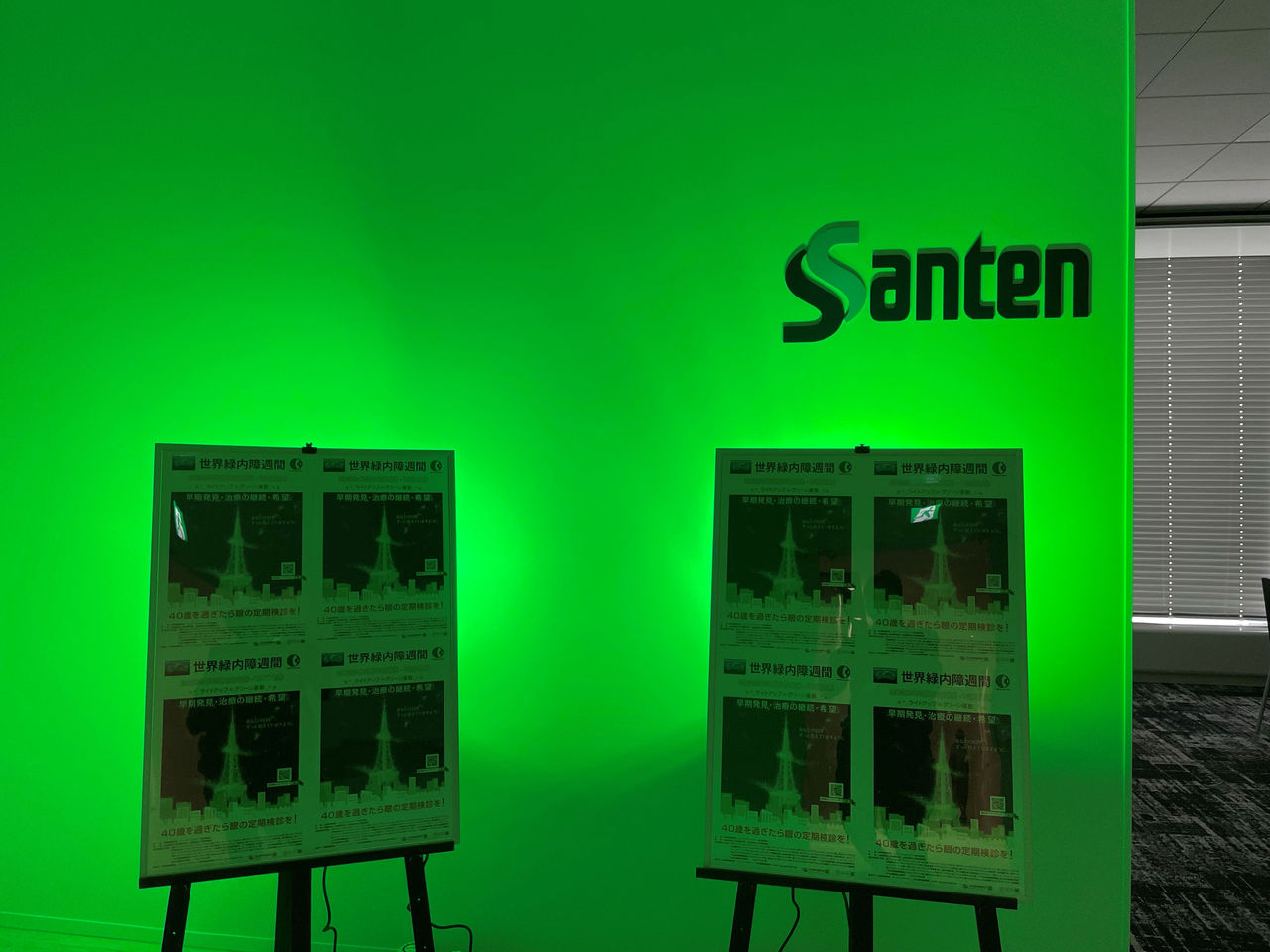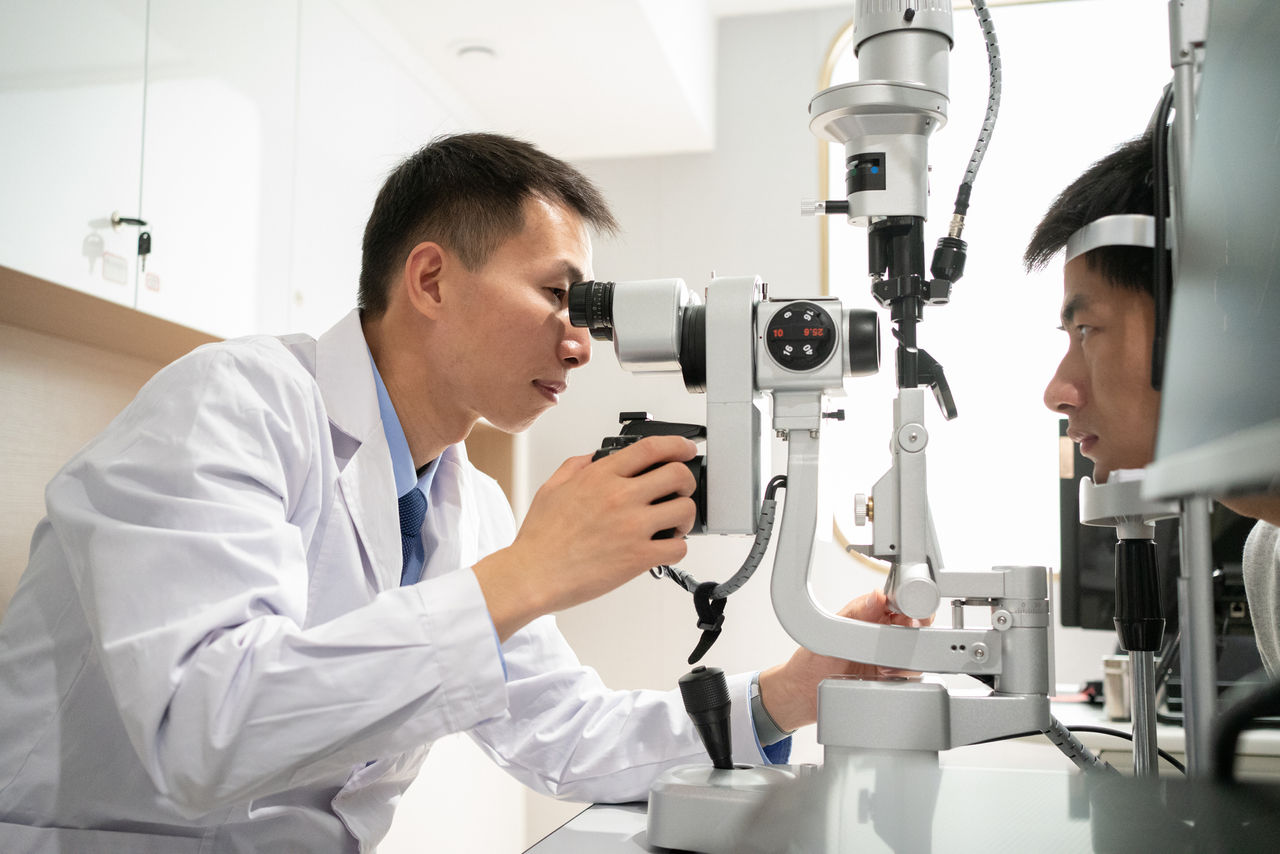Glaucoma is the leading cause of blindness in Japan.*3 According to a detailed glaucoma epidemiological study (the Tajimi Study) conducted between 2000 and 2002, there are an estimated 4.65 million glaucoma patients in Japan (calculated based on 2016 demographics). Furthermore, in the same study, the rate of new glaucoma detection was 89%, which suggests that many patients are untreated.
Patients need to visit their hospital once a month for two months after being diagnosed with glaucoma, and once every two-to-three months from the third month onward. The challenge is how to encourage patients to continue their treatment. In Japan, one survey showed that about 40% of patients have discontinued their treatment after one year. *4
Have you ever heard of World Glaucoma Week (WGW), recognized around the world for one week in early March each year? This year’s WGW for glaucoma awareness takes place from March 12-18. You may have seen local monuments lit up in green, the symbolic color of glaucoma.
Glaucoma affects approximately 76 million people worldwide, a number that is expected to increase to 95 million by 2030.*1 It is the leading cause of blindness in many countries and regions, and early detection and treatment is very important to reduce blindness caused by glaucoma, since early symptoms are rarely recognized by patients and are often advanced by the time they are detected.
*1 World report on vision. Geneva: World Health Organization; 2019. Licence: CC BY-NC-SA 3.0 IGO
To contribute to improving the quality of life of glaucoma patients
Glaucoma is a disease that causes damage to the optic nerve, which transmits information from the eyes to the brain, resulting in a narrowing of the visual field (range of vision). Even if one eye loses vision, the other eye compensates for the loss of vision, so there are few subjective symptoms in the early stages of glaucoma. Therefore, it is not uncommon for the condition to have worsened by the time it is noticed.
Narrowing of the visual field interferes with work, hobbies, and other activities, leading to a reduced quality of life (QOL). It has also been reported that people with glaucoma are four times more likely to fall and seven times more likely to have an automobile accident than normal people.*2
As a company specializing in ophthalmology that addresses people's eye health, and in order to realize "Happiness with Vision," during WGW Santen will actively promote awareness that glaucoma is a relatively prevalent disease. It does not necessarily lead to immediate blindness, and long-term vision can be maintained, but early detection and early treatment is critical. We will highlight the importance of regular eye examinations to achieve this goal of early detection.
*2 Haymes SA, et al. Risk of falls and motor vehicle collisions in glaucoma. Invest Ophthalmol Vis Sci 2007;48:1149-55.
Glaucoma in various regions and Santen's efforts
The challenges faced by patients with glaucoma vary depending on the healthcare environment and each patient's circumstances. Let's take a look at the current status of glaucoma treatment in different countries and regions and the challenges they face.
Note: The number of patients and diagnosis rates for each country are listed with reference to information based on standards and data from each country. Data set conditions are not standardized.
Japan: The leading cause of mid-life vision loss. Early detection and encouragement of continued treatment are key

Santen is focusing on promoting awareness of the disease and its treatment by using social media, encouraging potential patients to visit an ophthalmologist for early detection, and providing communication tools for healthcare professionals to help increase patient treatment continuation.
In conjunction with this year's WGW, Santen offices around Japan will be illuminated in green, the symbolic color of glaucoma, to help focus attention on and build support for the event. Cartoon illustrations have also been created to reach people of all ages to further raise awareness of glaucoma.
*3 MHLW Grants-in-Aid for Scientific Research on Intractable Diseases, Research on Retinal Choroid Atrophy and Optic Neuroma
*4 Kashiwagi K: Clinical Ophthalmology 69(11) 270-273, 2015 (Kashiwagi K et al.: Jpn J Ophthalmol, 58: 68-74. 2014)
China: Standardization of treatment and addressing high treatment costs are challenges
It is estimated that more than 6 million people in China suffer from primary open-angle glaucoma, one of the main types of glaucoma. However, only about 70% of the approximately 1 million patients who see a doctor are correctly diagnosed with glaucoma.*5 This is because there are only about 500 glaucoma specialists in China, and the number of specialists and their facilities are insufficient.
The average treatment cost for glaucoma is approximately 2,500 yuan per year (about US$363*6), and the ratio of treatment cost to average daily income in 2021 will be 12.32% in urban areas and 30.85% in rural areas*7, making it a significant financial burden for patients.

Through the Glaucoma Center of Excellence (COE) Project, Santen will promote standardization of glaucoma treatment in China, integration of academic activities conducted online and offline, and sharing of typical cases. There are also plans to establish Glaucoma COE Centers in major urban areas with the aim of supporting, among other things, improved communication among researchers.
*5 Chin J Ophthalmol, August 2019, Vol.55, No.8
*6 1 RMB=US$0.15, for single-drug eye drop treatment, including two visits and follow-up
*7 Chin J Ophthalmol, November 2022, Vol. 58, No. 11
Asia: Helping to improve diagnosis rates and train medical specialists
It is estimated that up to 65 million people in Asia had glaucoma in 2020. *8 Many patients suffer impaired vision by the time they are diagnosed due to late detection, with 4.1% blind in one eye and 56% having significant visual field impairment in at least one eye.*9 However, the diagnosis rate of glaucoma remains low in many Asian countries, and many patients may not be aware that they have the condition until the disease has progressed to a severe stage. Therefore, there is a need for improved awareness, early detection, and access to effective treatment to reduce the burden of glaucoma in Asia.

Santen is committed to working with experts and medical societies to help healthcare professionals improve their knowledge and skills related to glaucoma. We are also involved in projects with local communities in the Philippines, Vietnam, and India, three countries with few glaucoma specialists, to improve glaucoma diagnosis and treatment techniques, as well as providing an app for glaucoma patients to deepen their understanding of the disease and its treatment.
During the WGW, we will utilize posters and videos about glaucoma throughout Asia to educate patients with materials and applications that will help them continue their treatment.
*8 Tham YC, Li X, Wong TY, Quigley HA, Aung T, Cheng CY. Global prevalence of glaucoma and projections of glaucoma burden through 2040: a systematic review and meta-analysis. Ophthalmology. 2014 Nov;121(11):2081-90.
*9 ChuaJ, BaskaranM, OngPG, et al. Prevalence, risk factors, and visual features of undiagnosed glaucoma: the Singapore epidemiology of eye diseases study. jAMA Ophthalmol. 2015;133(8):938-946.
United States: Projected increase in patients and high drug costs
In the United States, more than 2.7 million people over the age of 40 are affected by glaucoma. Due to the rapid aging of the population, the number of patients is projected to increase to approximately 4.3 million by 2032 and 5.5 million by 2050.*10
The glaucoma-related economic burden in the United States is US$2.9 billion, accounting for the majority of the $5.8 billion spent on the treatment and management of optic neuropathy in the country. The economic burden associated with glaucoma increases with the severity of the disease, making early detection and treatment very important from an economic standpoint.

During the WGW, we will utilize social media to raise awareness of glaucoma and promote patient education about early detection and treatment.
*10 Prevention CfDCa. Vision loss: a public health problem. 2022
Europe: Treatment costs vary with the level of progression, and an environment for continued treatment needs to be created
It is estimated that approximately 7.85 million people will suffer from glaucoma in Europe in 2040.*11 The cost of glaucoma treatment varies depending on the progression of the disease, ranging from 455 euros per year (about US$489*12) for stage 0 (early stage) to 969 euros (about US$1,040*12) for stage 4 (severe), of which 42-56% was for drug treatment, according to a report.*13 The treatment process must take into account patients’ individual needs and experiences, and create an environment in which the patient agrees with the treatment plan and is actively engaged in continuing treatment.

Santen is committed to providing new solutions to meet the needs of physicians and patients, while offering comprehensive glaucoma treatments for each stage of the disease.
*11 Tham Y-C et al. Ophthalmology. 2014;121(11):2081-2090
*12 1 Euro=US$1.07
*13 2005, Traverso et al.
Take the opportunity of WGW to think anew about the health of your precious eyes. Santen also offers a smartphone app The Glaucoma Vision Simulation, that allows you to self-check your glaucoma, downloadable here:
Apple Store / Google Play Store
If you are concerned about glaucoma, please consult your local ophthalmologist or eyecare professional.
